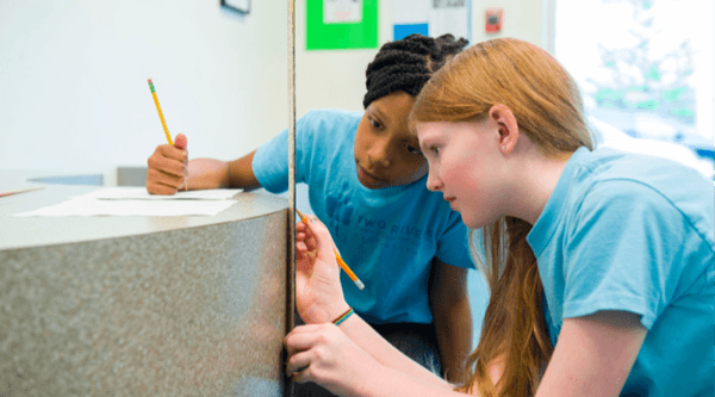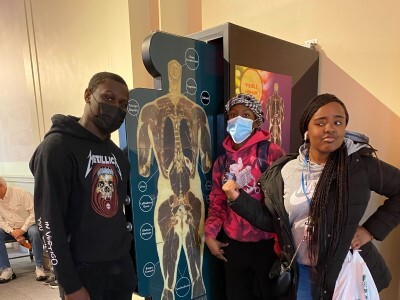New Designs for School
Lessons Learned from Remote Teaching: Reevaluating Our Values to Prioritize Connection and Care
Topics

We’ve all had the experience of truly purposeful, authentic learning and know how valuable it is. Educators are taking the best of what we know about learning, student support, effective instruction, and interpersonal skill-building to completely reimagine schools so that students experience that kind of purposeful learning all day, every day.
One way to foster a culture of care in school is to ruthlessly protect our most valuable resource: Time. These four lessons value the time of parents, colleagues, students, and ourselves.
Sociologist and researcher Brené Brown describes foreboding joy as...
the feeling [that] joy won’t last, or that there won’t be enough, or that the transition to disappointment (or whatever is in store for us next) will be too difficult.
Foreboding joy feels like the perfect description of what teachers experience every August as inservice creeps ever closer and we begin dreaming in spreadsheets and slide decks and to-do lists. This year especially, the idea of going back to school hits a little different. The joy I feel to be back in a real classroom with real students is stronger than ever, but the sense of foreboding feels equally unshakeable. Am I thrilled? Yes. Am I nervous? Absolutely.
Every time I think about this upcoming year, I get a swell of hope in my chest knowing that for many students, school is both a safe harbor and a place of joy and connection. The trouble is, the moment I dare to feel this joy, I hear other words whispering in my ear:
Words like learning loss, deliverables, deficits.
Take a look at those words. Do these words leave you with a sense of joy? Connection? Or do they leave you with that feeling of...foreboding?
Last spring, my colleagues and I created a semester-long project where students designed and coded apps based on something that they identified as the greatest challenge they were facing during the pandemic. Our students’ innovation amidst the pandemic even caught the eye of a local news team.
Close to 90 percent of our students named mental health as the greatest challenge they faced during the pandemic.
Finally, this year broke the stigma around talking about mental health, for both students and adults. But how can we ensure that these conversations persist when we return this fall? How can we offer the same care, grace, and support for our community that we offered during remote learning? In other words, what does it look like to foster a culture of care?
When I think of fostering a culture of care, I think about ways we can ruthlessly protect our most valuable resource: Time. Taking small steps to better value the time of our parents, colleagues, students, and selves will be an invaluable way to show care to the members of our communities.
Lesson 1: Valuing the Time of Our Families
My school asks for parents to attend quarterly student-led conferences. I believe in these conferences. I feel that it’s a valuable way for families and teachers to connect and for students to own their data and their progress. Despite my best efforts, pre-pandemic family participation was around 70-75 percent due to scheduling conflicts. Over the past year and a half of remote learning, I have had close to 100 percent of families attend all of their conferences. Zoom allowed for families to be a part of these conversations without worrying about child care or taking time off of work.
I believe this data should tell us something about how we can offer small fixes to better serve and respect the needs of our families. My hope is that the option for families to participate remotely in events like conferences, back-to-school nights, and presentations will be here to stay.
Lesson 2: Valuing the Time of Our Students
I can clearly remember the moment when family dinners stopped in my home growing up. It was seventh grade, the first year when students at my school were allowed to participate in extracurriculars. Student council Mondays and Fridays, and softball, basketball, or soccer practice (depending on the season) Tuesday, Wednesday, and Thursday. I’d get home around 6:00, grab a plate of dinner, then head to my room to do homework from 6:00 until bedtime. From 7th-12th grade, I was averaging about three to four hours of homework each night.
Looking back, I see this as a time when my core values of family and connection and curiosity began being overshadowed by things like competition and perfectionism.
Remote learning forced us to shake off our old expectations about homework. Do students really need more screen time after six to eight hours in front of a computer for school?
Imagine if homework was an opportunity for students to find the real-life connection to the skills they are learning in school. Calculate the tip for your family the next time you are at a restaurant. Read a younger sibling a book and notice each time the author uses figurative language. Practice your persuasive techniques by explaining to your parents why you should be able to have a later curfew.
Rethinking the purpose and the amount of homework will allow for students to spend time outside of school connecting with their families. It will allow for students to find and explore their passions. It can even help students make connections and see the relevance to what they’re learning in the real world.
Lesson 3: Valuing the Time of Our Colleagues
The other day I sent a frantic text to a colleague when they were three minutes late to a scheduled Zoom meeting: “What’s wrong? Is everything ok?”
Something about Zoom teaching has sharpened my appreciation for punctuality. I cringe when I think back to the pre-pandemic times when I would casually stroll into a meeting 10 minutes late, or when I would schedule a meeting without a clear agenda or purpose.
My hope is that we continue to value our colleagues' time by starting and ending meetings on time, sending out those agendas in advance, and thinking through a clear purpose for each time we gather.
Lesson 4: Valuing Our Own Time
Pre-pandemic, it wasn’t unusual for me to spend eight, nine, or ten hours inside without ever leaving the school building. After those 10-hour days, I was still lugging home tote bags filled with papers and lesson plans. There was no voice in my head telling me when enough was enough.
Ironically, it took working from home for me to be better about setting clear boundaries between work and home. I would end each day by shutting my computer at 5:00 and creating a to-do list for the next day. My husband and I would walk our dog and we would each share our Rose and Thorn for the day, a practice that helped me process both my highs and lows from the day. It signaled to my brain that it was ok to say “enough” and to turn my focus away from work for the evening.
My hope is to continue with end-of-the-day rituals that allow for me to process the lows and celebrate the highs of the day. My goal is to leave work at work in order to see home as truly a place for rest.
We have gained so much perspective on the importance of balance from our time apart, and we have an opportunity to take these lessons and continue to grow as our school communities return this fall. In what is sure to be a fall filled with some growing pains and turbulence as we navigate this new normal, let’s keep our conversations centered on joy and connection. Our students, families, colleagues, and selves will all be better for it.
Photo at top courtesy of Two Rivers Public Charter School.




